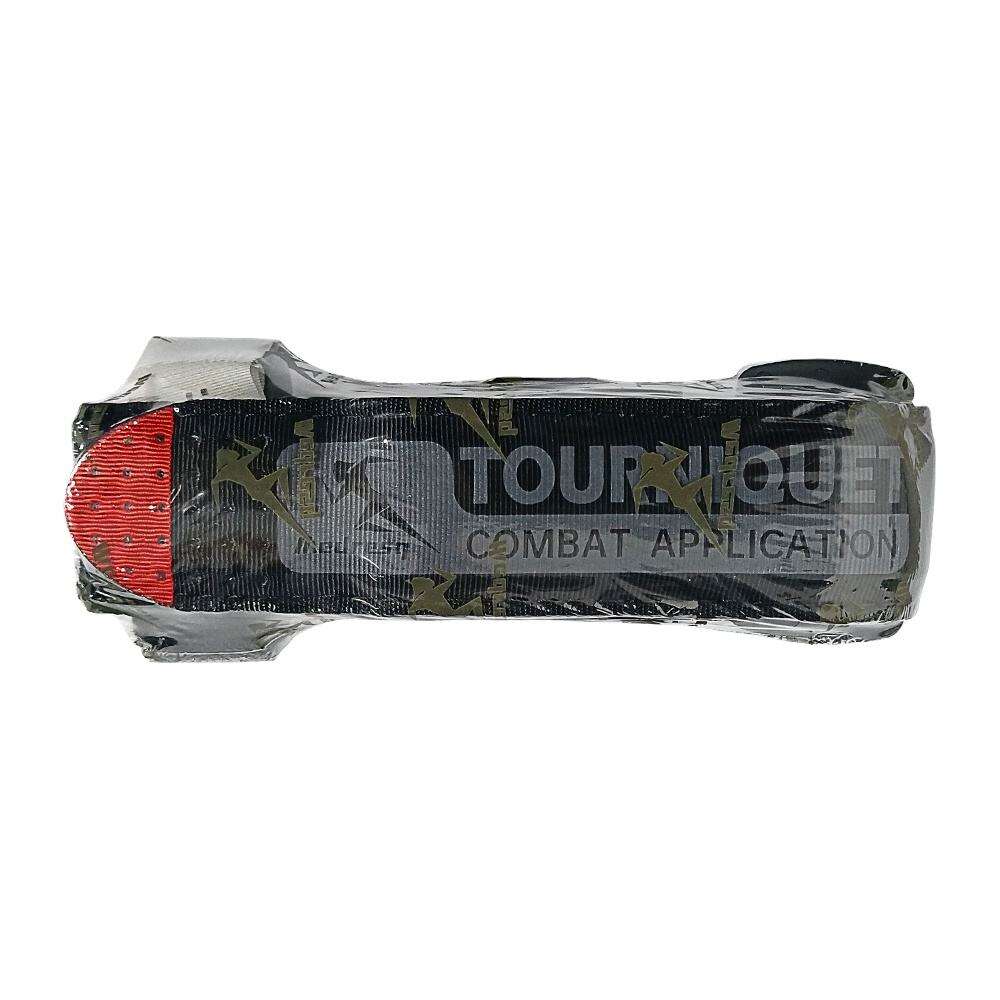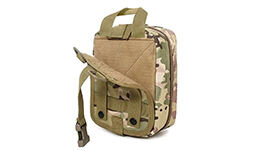Windlass Tourniquet Systems Are Essential in Modern Trauma Emergency Care
Severe extremity bleeding is the leading cause of preventable deaths during emergencies, battlefields or natural disasters, according to the National Trauma Institute. Accordingly, around 30% of battlefield and out-of-hospital trauma deaths result from uncontrolled hemorrhage. As such, trauma emergency solutions centered around "windlass tourniquets" have become indispensable lifesaving tools in military emergency response systems worldwide.
From Battlefield to Civilian Use: The Evolution of Tourniquet Technology
Early hemostatic methods often used simple materials like cloth strips and belts as bandaging solutions, yet these methods lacked controllable pressure, were susceptible to slippage and were difficult to use, often leading to tissue damage or hemostasis failure. With modern emergency care concepts come professional-grade hemostatic devices - spin-on designs like Combat Application Tourniquet (CAT) and Special Operations Forces Tourniquet (SOF-T) are particularly notable examples; due to their efficiency, stability, one-handed operability they quickly gained acceptance by US Special Forces while continuing to expand into emergency response systems globally.
Windlass rod tourniquets owe their success to their unique windlass rod structure, which generates continuous mechanical force via rotating metal or high-strength plastic rods and applied uniform pressure via wide nylon straps to block arterial blood flow quickly and effectively in short period of time. Experimental evidence indicates that CAT tourniquets deploy in under 15 seconds on average with an impressive 95% hemostasis success rate - significantly outperforming traditional methods.
II. Comprehensive Solution: More Than a Tourniquet
Today's tourniquet has evolved beyond being just an individual medical device into an emergency response system. A variety of standardized components have been assembled around its core product to form a Tourniquet Kit:
Tourniquet Holder/Pouch: A dedicated and quick-access Tourniquet Holder/Pouch can be attached to tactical vests, first aid kits, or everyday carry (EDC) gear, providing ready access at critical moments.
-ETQ Tourniquet (Emergency Trauma Qwik-Tourniquet): Focusing on rapid deployment design suitable for use by non-professionals in high stress environments, it offers rapid deployment.
-SOF-T Tourniquet: Equipped with a dual locking mechanism to prevent its windlass from rebounding and maintain stable pressure during strenuous exercise or transportation, the SOF-T Tourniquet guarantees stable pressure levels even under strainful circumstances.
Medical Windlass Tourniquet: Adhering to ISO 10993 biocompatibility standards, it is designed for use in clinical settings like hospital emergency departments and operating rooms.
These modular designs create a closed-loop process of identification-retrieval-rescue-transport that significantly enhances on-site response efficiency.

III. Diversified Application Scenarios: Addressing Military, Police and Civilian Sectors
Originating as military equipment, spin-on tourniquets have since been widely applied across various high-risk settings:
1. Military and Law Enforcement Operations: Special forces and counterterrorism units have included CAT or SOF-T in their standard individual first aid kits to support both self-rescue and mutual aid efforts. Studies have revealed that since full deployment of CAT across US military services, mortality associated with major extremity hemorrhage has fallen nearly 90%.
2. Pre-Hospital Emergency Care: Firefighters and EMTs (Emergency Medical Technicians) employ tourniquets immediately in emergencies such as traffic accidents and falls, giving life support professionals more time for advanced life support if required.
3. Public Emergency Awareness: Programs such as "Stop the Bleed" provide nationwide training in hemostasis skills in the US, Canada, Australia and other countries. They encourage schools, shopping malls and sports venues to equip EDC Tourniquets (portable tourniquets), increasing overall social resilience.
4. Outdoor and Extreme Sports: Mountaineering, trail running, and cycling enthusiasts typically include lightweight tourniquets in their first aid kits to protect against accidental cuts or impacts that cause arterial ruptures that require arterial clamping.
IV. Scientific Use and Training: Avoiding Risk of Misuse
Spin-on tourniquets can be extremely useful medical tools, yet use must adhere to specific medical guidelines. Both International Trauma Life Support (ITLS) and the American Heart Association (AHA) recommend their use.
Use only when life-threatening extremity bleeding cannot be controlled with direct pressure;
Application should take place 5 cm proximal to the wound site while avoiding joints; Time must be recorded, with continuous use not expected to exceed two hours;
To prevent insufficient pressure being applied, application should not take place over clothing or jackets.
Intelligent tourniquets are currently under development, featuring pressure sensors and wireless transmission capabilities for real-time monitoring of tissue perfusion status and further increasing safety.
V. Accelerating Domestication: Establishing an Emergency Supply Chain for Disaster Planning
China has made great strides in emergency medical equipment over recent years. Numerous companies have released domestic spin-on tourniquets that meet international standards and obtained CE and FDA certification; simultaneously many locations throughout China began piloting "trauma first aid kits" containing tourniquets in subway stations, airports and large events across China; some provinces and cities even included basic hemostasis skills into mandatory training courses for police, teachers and security personnel.
Experts emphasize the importance of creating compatibility between tourniquet pouches and tactical equipment, reducing civilian procurement costs, and strengthening public education as future priorities. Only by making "accessible equipment with widespread skills available" can an inclusive trauma emergency response network covering urban and rural regions be created.
Conclusion
From its humble origins as a simple wind turbine to becoming part of modern trauma management's arsenal, rotary tourniquets have evolved beyond simple medical devices to become essential components in managing severe bleeding emergencies. A properly applied tourniquet may even mean life or death!
Technology's importance lies not in its complexity but in its utility; first aid's value consists not in post-incident rescue but immediate intervention. If we give all people an equal chance to learn this skill and every tourniquet can be quickly removed and used correctly in critical moments, society will move toward becoming more resilient and secure.
Hot News
-
Advancements in Medical Structures: Enhancing Emergency Response and Patient Care
2025-06-13
-
The Vital Role of Stretchers in Emergency Medical Care
2025-03-07
-
DEVELOPMENT AND PROSPECT OF BATTLEFIELD INDIVIDUAL FIRST AID KIT
2025-02-20
-
Enhancing Emergency Response: The Role of IFAKs in Trauma Care
2025-02-20
-
Windlass Rod Tourniquet: An Essential Component in Emergency Medical Response
2025-02-13
-
The Windlass Rod Tourniquet: A Lifesaving Device in Emergency Medical Response
2025-02-13
-
Decompression Needle: Essential Design, Usage, and Future Directions in Trauma Care
2024-11-29
 EN
EN
 FR
FR
 DE
DE
 IT
IT
 JA
JA
 KO
KO
 RU
RU
 ES
ES
 AR
AR
 BG
BG
 HR
HR
 DA
DA
 NL
NL
 FI
FI
 EL
EL
 NO
NO
 PL
PL
 PT
PT
 RO
RO
 SV
SV
 TL
TL
 ID
ID
 SR
SR
 UK
UK
 VI
VI
 SQ
SQ
 TH
TH
 TR
TR
 AF
AF
 MS
MS
 CY
CY
 IS
IS
 HY
HY
 AZ
AZ
 KA
KA
 MN
MN
 MY
MY
 KK
KK
 UZ
UZ
 CS
CS



